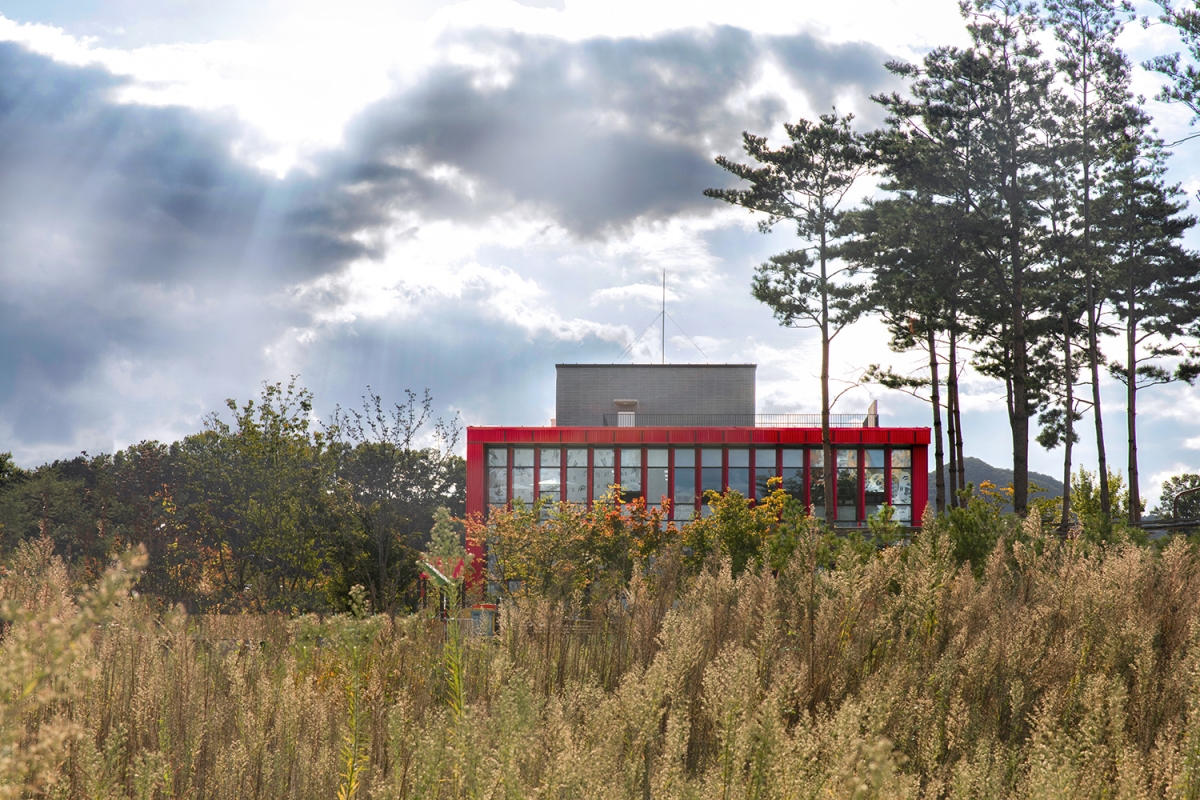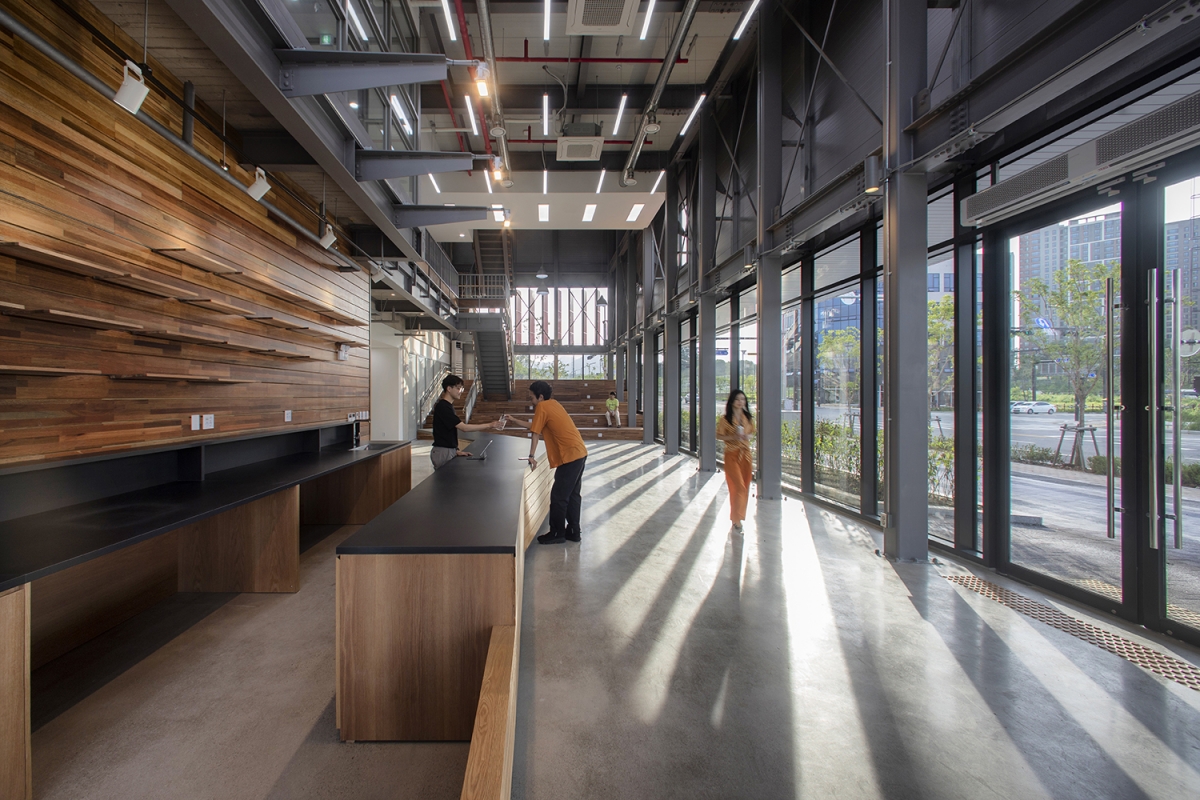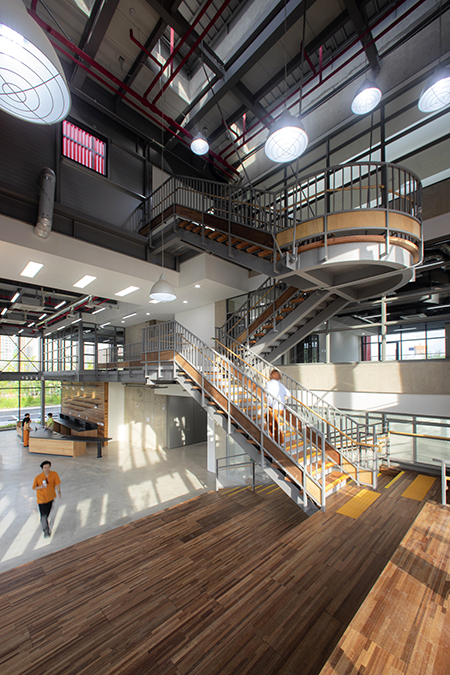
The Misconception That the Café Is Only for the Elderly: Coffee Culture Complex
Coffee is a great source of employment and helps the elderly in their social activities. The Korea Association of Community Senior Club manages a total of 198 senior clubs all over Korea, and many of these organisations operate senior cafés (silver cafés) as part of their economic project. The Hwaseong Senior Club is also working hard to create jobs for the elderly over the age of 60 through ‘Nono Café’ at its 44 branches. According to the agency’s explanation, barista activities are relatively less physically demanding and less risky for the elderly, while having the advantage of preventing isolation in the community by creating contact with a variety of customers.
Coffee Culture Complex (2020) is a neighbourhood living facility mediated by coffee, and is a building with facilities for the elderly, educational space, and workspaces of the Hwaseong Senior Club. It is located on the northwest end of Sambong Neighbourhood Park of Bongdam-eup. This area is a newly emerging public housing district mainly formed around apartment complexes. There were still many lots under construction around the Coffee Culture Complex. The architect of the project, Zo Hangman (professor, Seoul National University) believes that the success of a public cultural complex in outskirt relies on its presence within the community. Therefore, in order to arouse the awareness and interest of residents, an intense red colour, which is complementary to the park where green is the main colour, was selected as the exterior wall colour. Considering only the impact of the aesthetics, it may be said that the architect’s intention has succeeded to some extent, as a first-time visiting reporter was able to spot the building from a distance.

The café area on the lower floors is open to the street via glass windows and therefore customers are visible through the windows. Behind a long counter facing the entrance, three senior baristas in uniforms welcome their customers. After ordering drinks and turning around, you face an industrial interior which used to be an extremely popular interior trend. Instead of a clean finish, building equipment and steel structure are exposed. This is partly due to the architect’s consideration of the tight budget and his intent to create a factory-like atmosphere. In the photos of the Coffee Culture Complex reviewed prior to visit, there was a cold sentiment to the space even considering that the photos were taken right after construction, which did not quite match the images of the ‘elderly’, who are the main users of the building. However, experiencing the space in person we were able to feel the warmth radiating from the users and experience sunlight filling the space offsetting the sharp and intense atmosphere of the building.
Families out on excursion with kids, young adults reading books and studying, and middle-aged men chatting in groups. No other cafés around the Coffee Culture Complex had as diverse user groups. Elders may come to chat with the senior baristas at the café, but what is the reason for other visitors? Comparing the Coffee Culture Complex with nearby cafés, the difference seemed to lie in the seating. Zo commented that he intended this place to be neutral so that it can be the ‘third place’ which Ray Oldenburg proposed. The diverse typologies of seating accommodated the various needs of visitors. In fact, the long table placed in the centre of the café with a 2 – 3 storey height void, was loved by visitors who sought for a place to study or work. Zo said that he placed this long table in an oblique line, thus dividing the space into various areas and volumes. Individual tables by the window next to the long table are suitable for separate groups of visitors to chat. The oblique placement of the long table also acts in inducing a natural flow to the grand stair-like chairs or the small library. The large seating of the grand stairs become a playground for kids, and at events such as a ‘Visiting Concert’ held last March, it is used as seats for the audience. The exposed stairs integrated into the grand stair also visually and physically connect the barista education areas and auditorium on the second floor and offices on the third floor. As such, the Coffee Culture Complex was created as a result of the senior citizen job creation project, but was able to establish itself in the region by embracing a wide variety of members of our society.

You can see more information on the SPACE No. 666 (May 2023).






